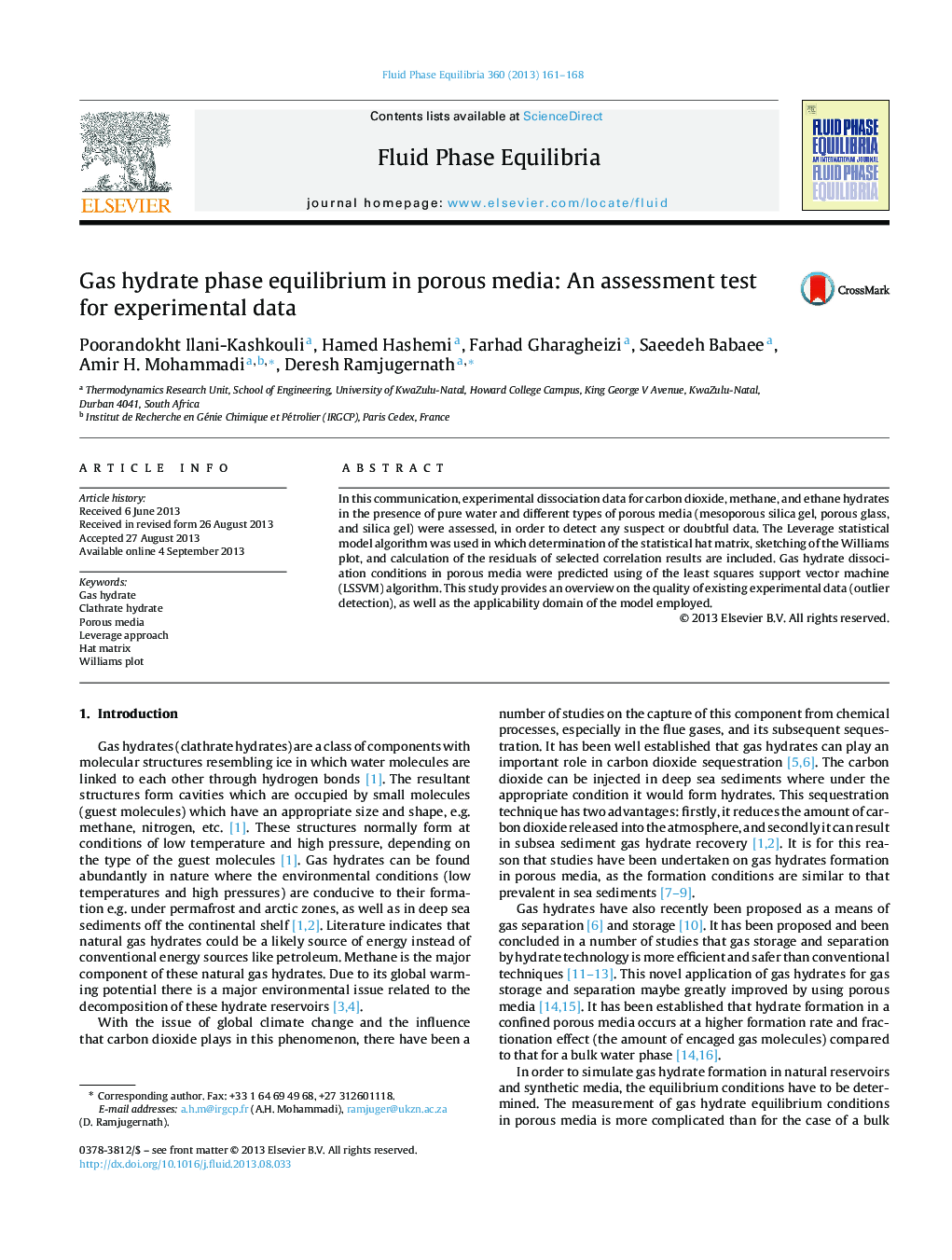| Article ID | Journal | Published Year | Pages | File Type |
|---|---|---|---|---|
| 203011 | Fluid Phase Equilibria | 2013 | 8 Pages |
•Leverage method is applied for assessment of experimental hydrate dissociation data in the various porous media.•Ability of the LSSVM method in predicting experimental data is established.•Majority of experimental data are found to exist in the applicability domain of the model employed.•Eleven hydrate experimental data can be classified as suspect or doubtful data.•Seven hydrate dissociation pressure data are out of the model capability domain.
In this communication, experimental dissociation data for carbon dioxide, methane, and ethane hydrates in the presence of pure water and different types of porous media (mesoporous silica gel, porous glass, and silica gel) were assessed, in order to detect any suspect or doubtful data. The Leverage statistical model algorithm was used in which determination of the statistical hat matrix, sketching of the Williams plot, and calculation of the residuals of selected correlation results are included. Gas hydrate dissociation conditions in porous media were predicted using of the least squares support vector machine (LSSVM) algorithm. This study provides an overview on the quality of existing experimental data (outlier detection), as well as the applicability domain of the model employed.
